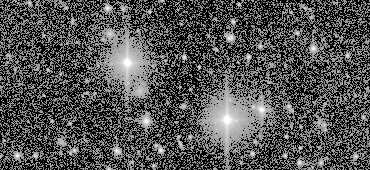FAQ
Things can get confusing sometimes, problems do no appear to fit into any given category, etc. We try to answer a couple of re-ocurring questions here and additional questions can be found on the redmine forum here [link removed for DEMO]. If you have a question that may be of broader interest to the community, post it on the redmine forum or email it directly to the DES exposure checker folks. For technical requests (bugs or improvements to the website), open a github issue.
What happens with my submissions?
If your are logged in on this website, your submissions are recorded. In this case, clicking on the button without having marked anything tells us that you think the image is fine. It's not a problem if you missed something on the image or you hit the button accidentially, since we don't have to be complete in finding problems, we seek to be reliable when we state that something is problematic.
False positives vs false negatives?
We would like to know about any kind of flaw in the data. Therefore, please mark both false negative and false positive instances of artifacts (e.g., use "Edge-Bleed" to mark both an edge-bleed without an edge-bleed mask and a edge-bleed mask without an edge-bleed). With the release of Y1A1 data, we provide a button, that allows you to report a false-positive treatment of such a problem.
What's up with the underlined letters on buttons?
Any underlined letter on a button, like these ones
indicates that you can use a keyboard shortcut, namely Alt+m or Alt+s in these two cases. Hint for Mac users: Alt = Opt
What are those dots in the column masks?
Very hot pixels will overflow into downstream pixels during readout creatig a "bad column". Additionally, cross talk creates hot pixels spaced every 60 pixels upstream (towards the readout side) of the hot pixels. This appears as a dotted mask upstream of a truncated bad column mask. These dots are not actually a problem class. For some more details see here.
I can't see the images. What's wrong?
Very likely your browser doesn't support the way we load the images. Safari version 5 is an example for this lack of implementation of a nominally supported functionality. In this case, please use another/newer browser instead.
Are stars being masked properly?
The intention of the current star masking is to mask only the most problematic pixels. This includes the saturated pixels at the center of stars, a circular region surrounding bright stars, and horizontal "bleed-trails" that are saturated along the readout direction. Currently diffraction spikes and Y-band vertical spikes are not explicitly dealt with by the star masking software. The satellite track finder has been tweaked a bit in an attempt to mask the worst diffraction spikes, but the effectiveness of this remains to be seen.
What's up with Y-band?
The Y-band DES exposures are only 45 seconds long and show a number of unique features. In this band, bright stars can often be seen to have vertical spikes extending above and below the saturated pixels of the star. We believe that these spikes are consistent with the diffraction of light from the gate structure of the CCD. This effect would be worse in Y-band since more photons make it to the gate. More information can be found here [link removed for DEMO] and these vertical star spikes do not need to be flagged. To help checkers identify issues that may be arising from the differences in the Y-band exposures, Y-band images have the band name highlighted in red.
Why can't I see cosmic rays in Y1A1?
In Y1A1 we switched to a new cosmic ray masking algorithm and allow it to try to "fix" the pixels impacted by cosmic rays. This means that when the cosmic ray masker is working properly, you won't be able to see the cosmic rays that were masked. When the cosmic ray masker masks only part of a cosmic ray, you may see the bright tails of the cosmic ray leaking out of the ends of the mask. Please mark any cases where this occurs.
What's up with missing CCDs in the FoV image?
Sometimes good CCDs go bad. Half of CCD31 is known to suffer from non-linear gain effects. CCD62 was over-exposed during SV (??/??/2012) and now has a low saturation point. CCD2 was lost during Y1 (11/28/2014) likely due to an electrostatic shock. For Y1A1 CCD2, CCD31, and CCD62 have been removed from the DES exposure checker. Clicking on these CCDs in the FoV image will return a "File Missing" error and occasionally they appear blacked out on the FoV image.
